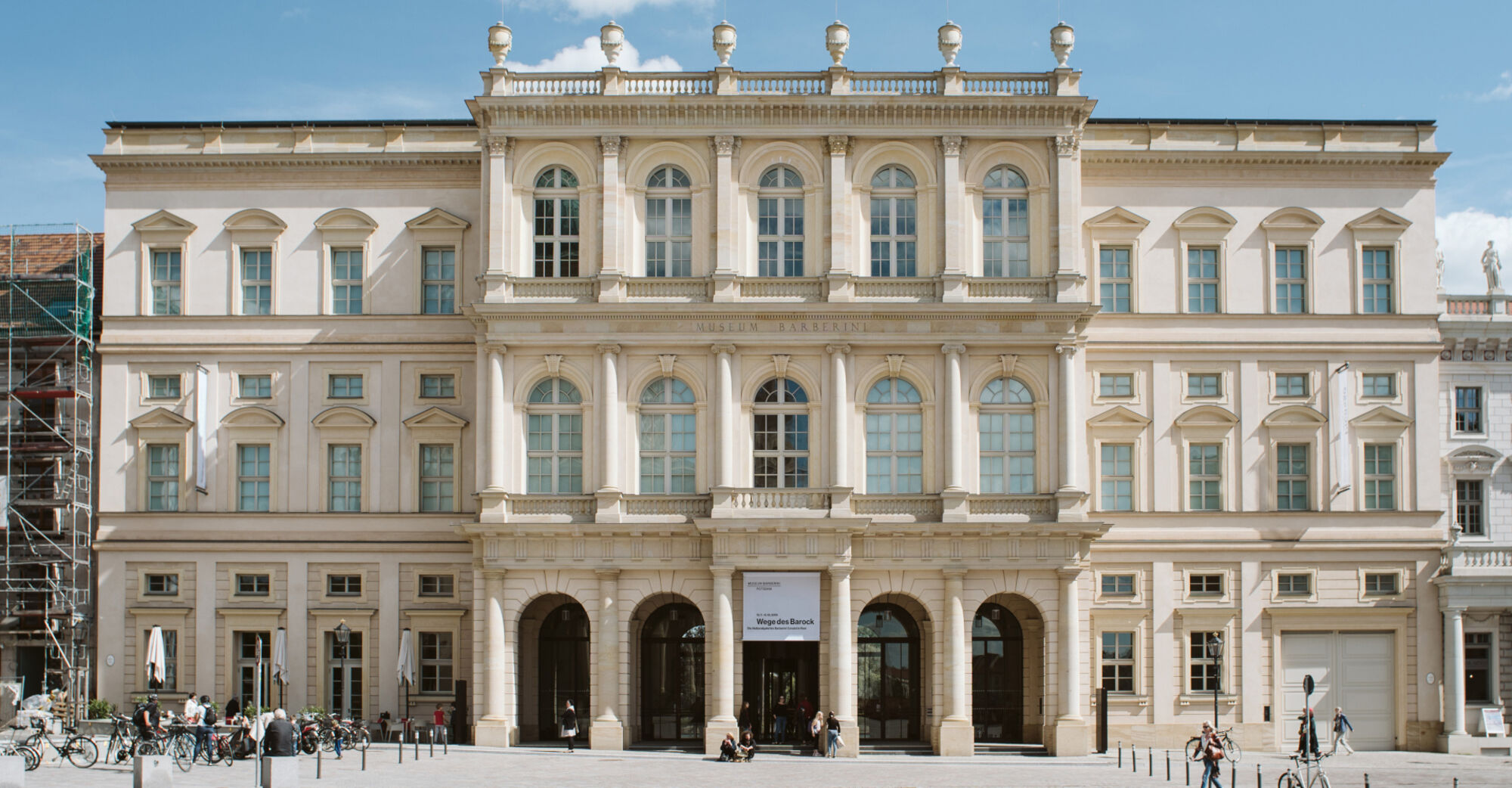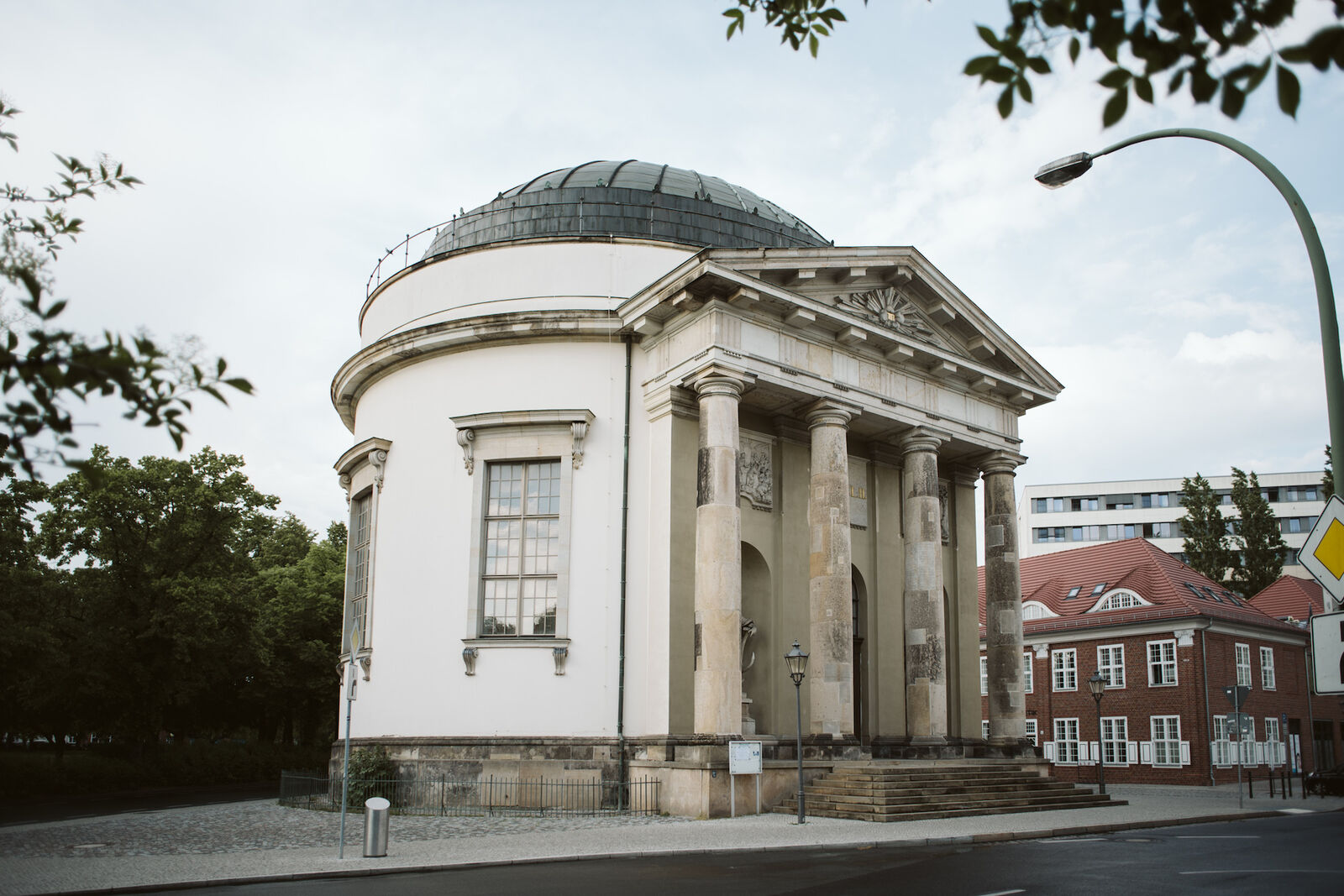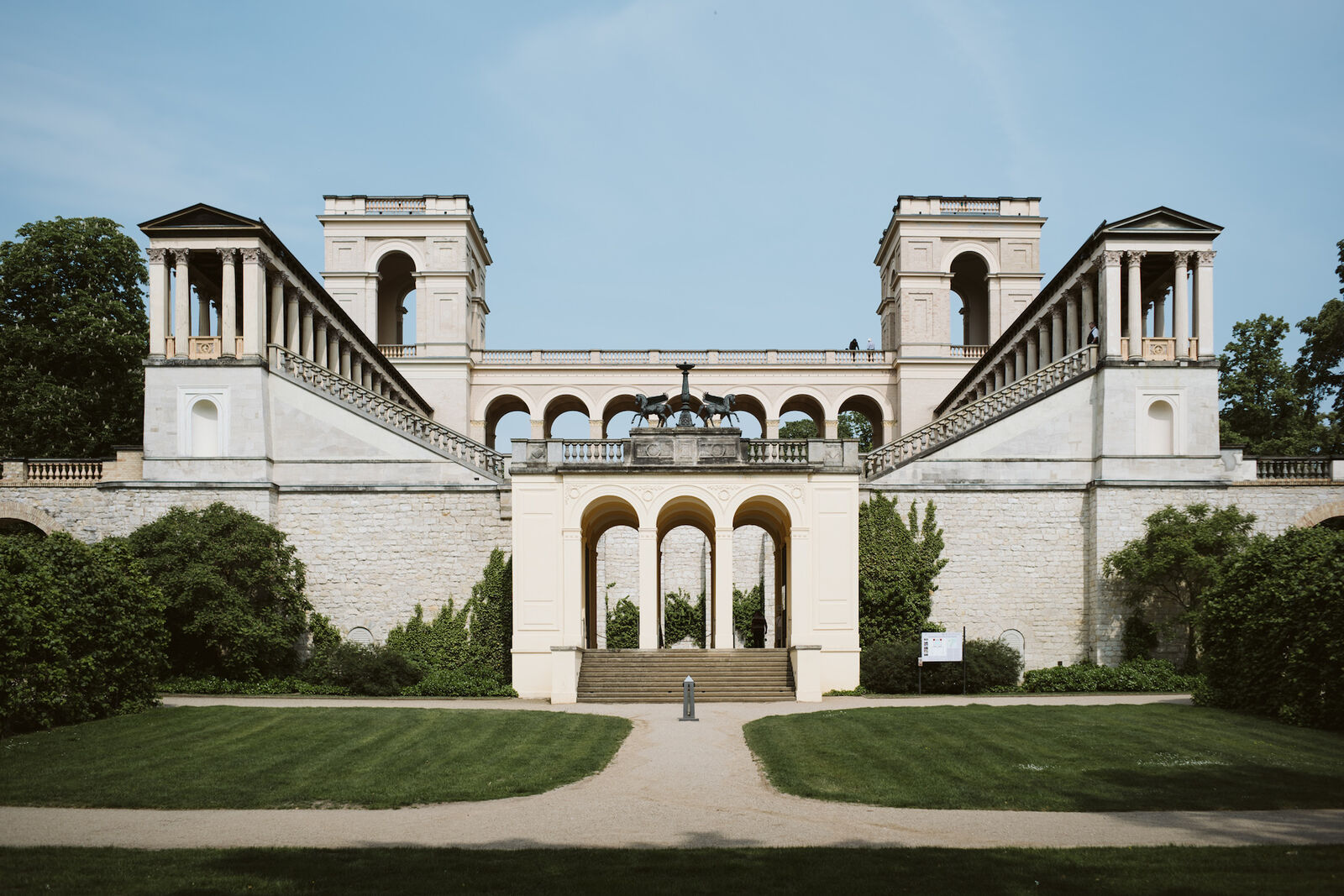
Museum Barberini / Palazzo Barberini
The most magnificent façade on the square is that of the Barberini Palace. Its yellowish sandstone shimmers in the sun as its façade rises impressively. Various classical columns adorn the middle section. Large arched windows give a hint of magnificent rooms behind them. At the very top, huge vases adorn the building. You'd almost think you were in Rome.

Henry Balaszeskul
Museum Barberini, Potsdam
A piazza in Potsdam
On the slope of the Quirinal, one of Rome's seven hills, stands the Palazzo Barberini. Pope Urban the Eighth, from the Barberini family, commissioned the best architects of his time to build a family palace. Since its construction in 1632, the building has been considered the embodiment of the Baroque palazzo all over Europe. And Frederick wanted something like it.
Starting in 1750, he had the Alter Markt, the Old Market Square, turned into an Italianate piazza, lined by façades evoking the Italian Renaissance and Baroque. Frederick had never seen the Italian buildings with his own eyes, because he'd never made a trip to Italy. While his contemporaries as young nobles had taken the customary Grand Tour to Italy, Frederick had made an unsuccessful attempt to flee his family when he was crown prince, was put under arrest and later strictly monitored by his father. An educational trip abroad, before the duty of kingship called, was absolutely out of the question for him. So he formed his own notion of Italy, which all the wayfarers and art-lovers raved about, with the help of books, pictures and travel accounts.
As an aesthete, Frederick wanted the Alter Markt, on which his palace stood, to be enclosed by masterpieces by Italian architects. In 1771, Carl von Gontard and Georg Christian Unger were commissioned to build the Barberini Palace, modelling it on a copperplate by Piranesi. Frederick had found the plate in his library. Whereas the Roman Palazzo Barberini was an aristocratic palace, middle-class families lived in its counterpart in Potsdam.
A house for the citizens
The magnificent façade was just a piece of scenery. The floors behind it didn't match its outer structure. Some of the rooms in the mezzanines had low ceilings and were badly lit. In 1786, Potsdam's chief royal court architect, Heinrich Ludwig Manger, criticised the fact that the king, in satisfying his needs for prestige, unfortunately too no consideration of the needs of his citizens.
For Frederick the Great, the Barberini Palace was the most important element in turning the Alter Markt into a Roman square. The two side wings at the rear were first added in the mid-19th century by Ludwig Persius, Frederick William the Fourth's architect. In 1945 this gem on the Alter Markt was destroyed by bombs. 70 years later, the Barberini Palace was rebuilt. Above the first floor windows, its new use is carved in stone: Museum Barberini.
The Museum Barberini is one of the stops on the audio tour Italy in Potsdam, which was developed as a city tour for the Barberini App on the occasion of the exhibition Baroque Pathways (13.7.-6.10.2019). The tour, narrated by TV host Günther Jauch, invites visitors to discover 30 buildings and works of art around the Museum Barberini that were created in the 18th and 19th centuries based on Italian models. Download the Barberini App and let yourself be surprised by the many Italian facets of this city.






